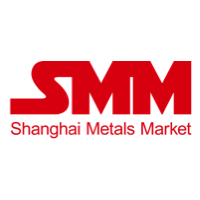Hydrogen Fuel Cell Vehicle Market Report for H1 2025: Challenges, Outlook, and Key Driving Factors
Key Ideas
- Production and sales of fuel cell vehicles in China experienced fluctuations in H1 2025, with notable growth in March and April-May.
- Key drivers include policy support with 116 hydrogen energy-related policies issued, expansion of application scenarios, and cost reduction of fuel cell systems.
- Top-tier enterprises like Antelope Hydrogen Energy, Farizon New Energy Commercial Vehicle, and Proton Motor showcased significant achievements.
- Challenges include insufficient hydrogen refueling stations in second- and third-tier cities, policy uncertainties affecting corporate production plans, and short-term pressure on the industry.
The production and sales of fuel cell vehicles in China faced fluctuations in the first half of 2025. Initial months were slow due to holiday periods and policy transitions, while March saw a spike in demand driven by local subsidy policies. April-May maintained steady growth, supported by infrastructure expansion. Key factors influencing the market included extensive policy support with 116 issued hydrogen energy-related policies, increased application scenarios like heavy-duty trucks, and a notable decrease in fuel cell system prices, enhancing overall vehicle economic efficiency.
Regional dynamics showed concentration in clusters like Beijing-Tianjin-Hebei and notable performances by top-tier companies such as Antelope Hydrogen Energy, Farizon New Energy Commercial Vehicle, and Proton Motor. Challenges like the inadequacy of hydrogen refueling stations in certain cities and policy uncertainties for 2025 posed obstacles, impacting corporate production plans.
Short-term drivers for the industry included the final year of the demonstration city cluster policy, highway access policies for hydrogen vehicles in ten provinces, and the seasonal peak expected in June and Q4. The report anticipates short-term pressure, but expects a rebound in the second half of the year pending factors like subsidy intensity, hydrogen refueling station progress, and green hydrogen cost reduction. The industry's outlook remains positive with the potential for a rebound if policy coordination improves, aiming for an optimistic target of 15,000 units despite the current challenges.
Topics
Blue Hydrogen
Environmental Impact
Market Trends
Automotive Industry
Energy Sector
Economic Analysis
Policy Support
Technology Trends
Corporate Dynamics
Latest News
